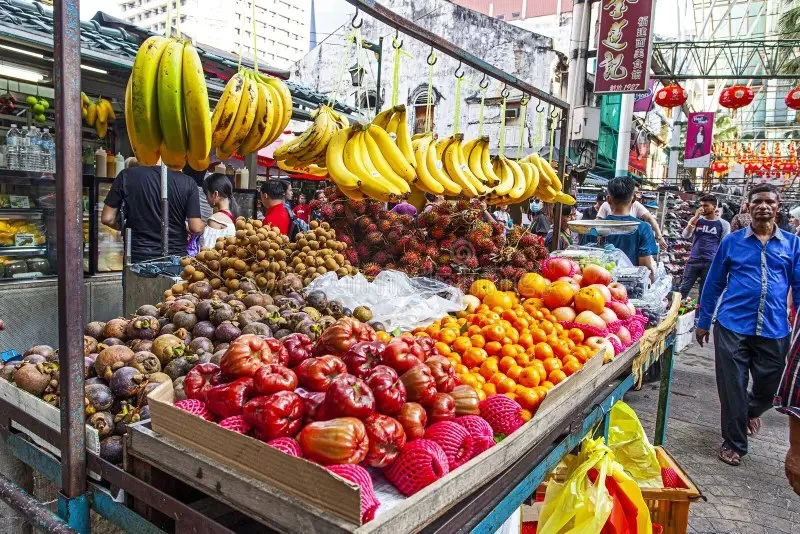
- malaysias-fruitful-identity - Malaysia’s Fruitful Identity and the Culture of Local Markets
- morning-delights-in-kuala-lumpur - Morning Delights in Kuala Lumpur’s Chow Kit and TTDI
- penang-food-markets-beyond-char-kway-teow - Penang Food Markets: Beyond Char Kway Teow
- tropical-treasures-in-kota-kinabalu - Tropical Treasures in Kota Kinabalu
- malacca-sweet-sour-history - Malacca’s Sweet-Sour History Through Fruits
- how-to-explore-markets-smartly - How to Explore Markets Smartly Like a Local
1. Malaysia’s Fruitful Identity and the Culture of Local Markets
When you think of Malaysia’s food scene, spicy sambal and nasi lemak may come to mind—but equally vibrant is its array of tropical fruits. From the infamous durian to sweet mangosteens, Malaysian food markets are where fruit meets culture. These bustling centers are more than just buying spots—they’re experiences. You’ll often find aunties trading gossip over rambutans and uncles debating over the ripeness of bananas. For travelers aiming to truly explore local life, visiting food markets with local fruits in Malaysia is essential.
2. Morning Delights in Kuala Lumpur’s Chow Kit and TTDI
One of the best ways to start a KL morning is with a visit to Chow Kit Market. This is where the heart of the city pulses strongest—amidst chatter, bargaining, and fresh jackfruits being sliced open with razor-sharp machetes. Further south, the TTDI Wet Market offers a more polished but equally authentic experience, especially for families. On weekends, you can spot children marveling at dragon fruits next to elder shoppers comparing durians. These places aren’t just markets—they’re open-air classrooms of Malaysian biodiversity.
3. Penang Food Markets: Beyond Char Kway Teow
While Penang is globally known for its street food, locals will tell you that the soul of Penang lies in its morning food markets. Air Itam Market and Pulau Tikus Market are gems for discovering lesser-known fruits like the ciku (sapodilla) or langsat. During my visit to Air Itam, I watched a grandmother explaining to her grandson how to choose the sweetest starfruit—“yellow, slightly soft, no bruises.” That moment, more than any dish, defined the charm of Penang for me.
4. Tropical Treasures in Kota Kinabalu
Borneo’s fruits are something else. At Kota Kinabalu’s Central Market, you’ll stumble upon buah tarap (a cousin of jackfruit), dabai (wild olives), and the elusive bambangan. These are fruits rarely seen in West Malaysia. This region’s biodiversity spills into its markets, making them a dream for food explorers. Many guided food tours available through UAK Travel include these lesser-known fruit spots, perfect for travelers seeking authenticity beyond clichés.
5. Malacca’s Sweet-Sour History Through Fruits
In Malacca, food markets feel like walking into a historical novel. The Pasar Besar Melaka doesn’t just sell produce—it sells stories. You’ll find pickled guava and dried tamarind snacks influenced by Peranakan cuisine, each with colonial and cultural footprints. One market vendor shared her grandmother’s secret to fermenting belimbing buluh (sour starfruit), a flavor enhancer in many local dishes. That kind of food heritage is what keeps these markets alive and worth exploring.
6. How to Explore Markets Smartly Like a Local
Market visits in Malaysia are best done early—before 10 a.m., when the sun is friendlier and produce is freshest. Bring cash, especially smaller notes. Be curious but respectful; asking for fruit samples is often welcome, but always ask first. A little Bahasa Malaysia goes a long way—“Berapa ni?” (How much is this?) breaks the ice fast. For travelers looking to immerse in local experiences, UAK Travel offers curated market tours that help you navigate both the flavors and the culture with ease.




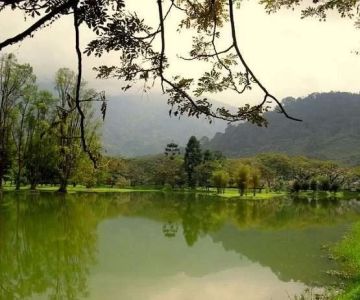
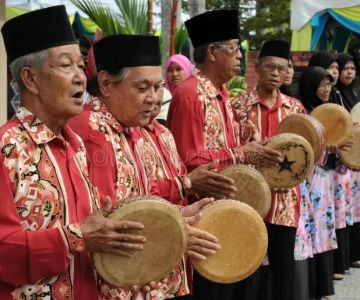
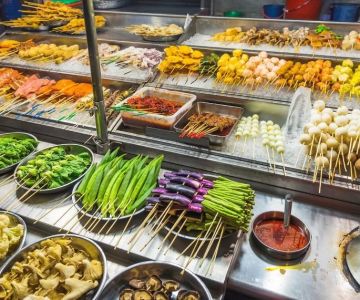
 Sup Tulang Daging Cincang5.0 (2 reviews)
Sup Tulang Daging Cincang5.0 (2 reviews) Thai Massage kajang (Chiang Mai Thai Massage)5.0 (1 reviews)
Thai Massage kajang (Chiang Mai Thai Massage)5.0 (1 reviews) Haza's Cookies4.0 (1 reviews)
Haza's Cookies4.0 (1 reviews)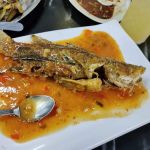 CT CORNER WESTERN & SEAFOOD @ PANDAN JAYA3.0 (26 reviews)
CT CORNER WESTERN & SEAFOOD @ PANDAN JAYA3.0 (26 reviews) River walk Desaria5.0 (1 reviews)
River walk Desaria5.0 (1 reviews) Homestay Ayutie TJ Temerloh5.0 (1 reviews)
Homestay Ayutie TJ Temerloh5.0 (1 reviews) Exploring the Unique Designs of Mosques in Malaysia: A Journey Through Islamic Architecture
Exploring the Unique Designs of Mosques in Malaysia: A Journey Through Islamic Architecture Exploring the Architectural Beauty of Mosques in Malaysia: A Journey Through Islamic Architecture
Exploring the Architectural Beauty of Mosques in Malaysia: A Journey Through Islamic Architecture Visiting Malaysia’s Most Famous Mosques During Eid: A Unique Cultural Experience
Visiting Malaysia’s Most Famous Mosques During Eid: A Unique Cultural Experience How to Get to the Famous Mosques in Kuala Lumpur by Public Transport: A Complete Travel Guide
How to Get to the Famous Mosques in Kuala Lumpur by Public Transport: A Complete Travel Guide Discover the History of Masjid Titiwangsa in Kuala Lumpur: A Cultural and Architectural Gem
Discover the History of Masjid Titiwangsa in Kuala Lumpur: A Cultural and Architectural Gem Top Mosques to Visit During Ramadan in Malaysia: A Traveler's Guide
Top Mosques to Visit During Ramadan in Malaysia: A Traveler's Guide